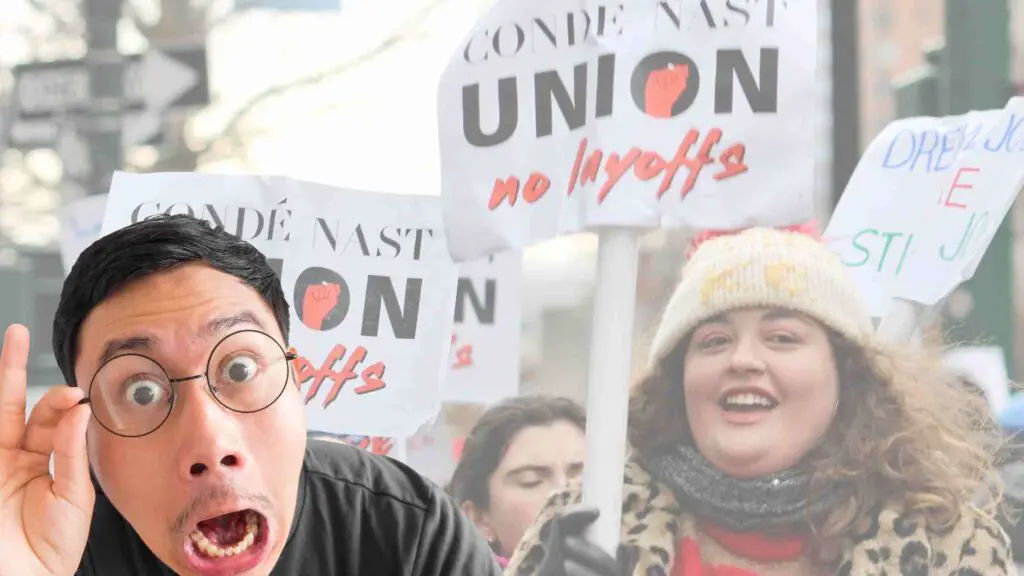In recent years, press offices have faced endless layoffs and cost-cutting news. Also, strikes and work stoppages have become more common in union negotiation tactics. On January 23, 2024, around 400 unionized employees from many Conde Nast brands left New York. The action comes months after Conde Nast announced it would lay off approximately 5% of its workers, or about 300 individuals. So, what happened in Conde Nast?
Advance Publications owns Conde Nast, a global media conglomerate. In November 2023, the company stated it would eliminate around 5 percent of its employees. In January 2024, union members from the company’s publications organized a strike for 24 hours. The company was engaged in unfair bargaining and violated the law. The union said they are canceling an earlier offer that the company made around layoffs.
So, what happened in Conde Nast? In this article, we will learn more about this company’s layoffs.
DiscontinuedNews is impartial and independent, and every day, we create distinctive, world-class programs, news, and content that inform, educate and entertain millions of people worldwide.
Layoffs at Conde Nast
Conde Nast is the media group that owns famous publications. It includes Vogue, GQ, Vanity Fair, and Bon Appetit publications. The company has been stuck in an unstable period marked by layoffs and labour negotiations.
In November 2023, about 94 Conde Union employees in editorial, video, and audience development roles received the bad news. The company stated that they were scheduled for layoffs as part of their cost-cutting measures.
However, the layoffs were pending due to the lack of a signed contract between the NewsGuild of New York-affiliated union and Conde Nast. As a result, it was under negotiation as part of the more extensive contract discussions.
Employees waited until January 2024 to find out what would happen to them. Later, Conde Nast moved employees slated for layoffs to a consolidated team known as the “Central Editorial Group.”
What happened to 94 employees?
The move within the company began as contract negotiations stopped. It left around 94 employees in a position of professional uncertainty. They are being separated from their previous roles. Also, they are allocated jobs that some see as routine and far from their expertise.
Recognized writers and editors were confined to summarizing previous stories and creating character studies of public traits. The members of the video team went through old recordings in
Search for clips for advertising reels. Thus, the mood within the centralized group ranged from frustration and despair to optimism.
Some saw the new duties as a waste of talent and time. They compared the experience to “purgatory” or a “rubber room.” Others thanked the media for providing stability in the face of industry issues. But they also admitted their prior roles had been downgraded.
Yet, the lack of urgency around their jobs and specific negotiation times added to emotions of confusion and worry.
Controversial Negotiations
Negotiations between the union and Conde Nast management have been drawn out. It heated up, with both sides arguing about the conditions of the proposed layoffs and the more significant contract deal.
Management is pushing for a quicker answer to job losses. However, the union maintains that layoffs must be addressed and decided upon as part of the contract package. The already tricky relationship between labour and management has become more complicated. It’s because accusations of bad-faith negotiation have been made and returned.
The union has raised tensions during the crisis. They threatened to go on strike if a deal was not reached. With the famous Met Gala coming up, unionized employees plan to leave the job if management fails to come to terms.
Demonstrations and rallies have taken place. The Guild members called for equal pay, job security, and a contract recognizing their contributions to Conde Nast’s success.
The union’s concerns begin with what they believe. They see management’s focus on cutting expenses over employee well-being. CEO Roger Lynch’s announcement of workforce reductions, followed by more layoffs, has fueled anger among union members.
Management’s efforts to separate layoffs from the more extensive contract negotiations have increased tensions. The union is asking that layoffs be addressed within the framework of a signed deal.
Current situation
The negotiation process has been made worse by legal disputes on both sides. Both of them have accused one another of unfair labour practices.
The union accuses management of using unfair negotiation approaches. Meanwhile, the management claims the union refuses to engage in actual talks about workforce reduction measures.
As the dispute continues, workers in the centralized group are uncertain. They are still determining their professional fate and when to expect a settlement.
Beyond the fate of employees, the issues significantly impact the future of labor relations in the media sector. The final result of negotiations between the Conde Nast Union and management is expected to set norms for labour rights and collective bargaining. This will set an example in an increasingly dynamic media market.
Conclusion
Finally, Conde Nast’s central editorial group reflects the difficulties between labor and management in the media sector. As negotiations continue and the threat of a strike approaches, the fate of affected employees hangs in the balance. It thus reveals the broader issues that workers face in an era of corporate consolidation and cost-cutting efforts.
Read More:
Dollar Tree Layoffs 2024 – How many employees are in the US?
